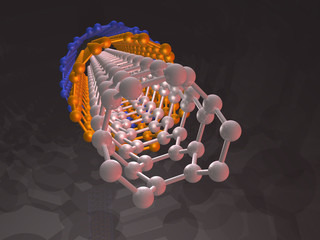Chemical Properties of Carbon Compounds
Chemical Properties of Carbon Compounds
Carbon is an entrancing component. It is known to shape right around ten million unique compounds the majority of which are chemical compounds that are natural in nature. Give us a chance to get familiar with somewhat about the chemical properties of carbon compounds.
All carbon compounds demonstrate some regular trademark properties. Give us a chance to see the chemical properties of carbon compounds. Four significant chemical responses are talked about underneath:
Ignition Responses:
Whenever Carbon and its compounds consume within the sight of Oxygen (or air), they give CO2, warmth and light.The procedure of consuming carbon and its compounds in overabundance of oxygen for the arrival of warmth and light (vitality) is known as burning.
Following are a portion of the instances of the ignition response of natural compounds:
C + O2 ⇨ CO2 + Warmth + Light
C3H8 + 5O2 = 3CO2 + 4H2O.+ Warmth + Light
(C3H8 is the atomic recipe for Propane, a typical gas present in LPG which we consume for cooking in our kitchens).
All in all, soaked hydrocarbons consume with an unmistakable blue fire, while unsaturated hydrocarbons consume with a yellow fire creating sediment (carbon).
Burning of hydrocarbons might be of two kinds: Complete ignition and fragmented burning.
Complete ignition of hydrocarbons happens in overabundance of oxygen(air), creating CO2 and H2O as the main last chemical products.Heat and light (clear blue fire) as a type of vitality is created.
Inadequate ignition happens when there is deficient Oxygen(air) and the hydrocarbon is in excess.This response consumes with a dingy or smokey fire and creates items which are CO(g) and additionally C(s) and H2O.
Oxidation Responses:
In a burning response, carbon compounds are oxidized within the sight of oxygen. Despite the fact that ignition is commonly an oxidation response, not all oxidation responses are burning responses. Oxidation is likewise completed by utilizing oxidizing specialists (Oxidants).
Oxidizing operators, likewise alluded as Oxidants are substances that oxidize different substances while experiencing decrease themselves.
Alcohols experience oxidation in nearness of Oxidants like soluble potassium permanganate (KMnO4) to shape carbolic acids.
Model: Ethanol experiences oxidation to create Acidic corrosive when warmed by an Oxidizing specialist like basic KMnO4.
Expansion responses:
Unsaturated natural compounds, similar to alkenes and alkynes, contain different securities (C=C, C≡C) between their carbon atoms.They experience expansion responses to end up soaked in nature.
The development of bigger particles by expansion of more radicals is known as expansion reaction.During an expansion response of unsaturated natural compounds, a reagent happens at the twofold fortified or a triply reinforced carbon molecules.
For instance; ethene is changed over into ethane when warmed with the impetus nickel.
CH2=CH2 + H2 + (Nickel impetus) ⇨ CH3−CH3
Nickel goes about as an impetus, which fundamentally manages (increment/decline) the rate of a given response, without itself experiencing any chemical change.
At the point when ethene experiences an expansion response with chlorine, it gives dichloroethane.
Chlorine is a halogen, whose particles incompletely break the carbon-carbon twofold bond in the alkene to a solitary bond and include itself crosswise over it.
Substitution Response:
A Substitution response is one in which a particle or a gathering of atoms(functional gathering) in the compound are supplanted by another iota (or gathering of iotas). Substitution responses are single relocation responses.
Alkanes, which have just single securities between their carbon particles, are immersed hydrocarbons.They are chemically least reactive.They are likewise called paraffin, as they have no partiality (least affinity)towards chemical changes (parum=little; affins=affinity).However, under appropriate conditions, they experience substitution responses.
For instance, under the nearness of Daylight, Methane responds with chlorine gas to create chloromethane and hydrogen chloride.
CH4 + Cl2 + Daylight ⇨ CH3Cl + HCl
Daylight (UV Light) separates the chlorine into free radicles, which starts the substitution response.
These responses characterize the chemical properties of carbon compounds.








No comments